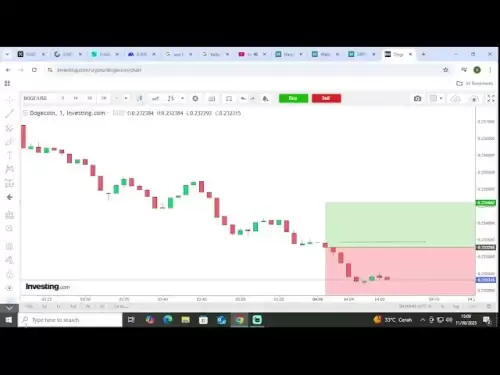-
 Bitcoin
Bitcoin $120100
1.16% -
 Ethereum
Ethereum $4329
2.25% -
 XRP
XRP $3.192
-0.22% -
 Tether USDt
Tether USDt $1.000
-0.01% -
 BNB
BNB $805.2
0.47% -
 Solana
Solana $178.7
-1.85% -
 USDC
USDC $0.9998
0.00% -
 Dogecoin
Dogecoin $0.2305
-1.62% -
 TRON
TRON $0.3445
1.17% -
 Cardano
Cardano $0.7940
-1.28% -
 Hyperliquid
Hyperliquid $44.44
-1.20% -
 Chainlink
Chainlink $21.86
-2.42% -
 Stellar
Stellar $0.4423
-0.15% -
 Sui
Sui $3.728
-3.84% -
 Bitcoin Cash
Bitcoin Cash $584.8
2.19% -
 Hedera
Hedera $0.2524
-2.87% -
 Ethena USDe
Ethena USDe $1.001
-0.02% -
 Avalanche
Avalanche $23.66
-0.78% -
 Litecoin
Litecoin $124.5
0.39% -
 Toncoin
Toncoin $3.399
1.77% -
 UNUS SED LEO
UNUS SED LEO $9.002
-0.44% -
 Shiba Inu
Shiba Inu $0.00001327
-2.10% -
 Uniswap
Uniswap $11.42
2.58% -
 Polkadot
Polkadot $3.957
-2.50% -
 Cronos
Cronos $0.1696
4.50% -
 Dai
Dai $1.000
0.00% -
 Ethena
Ethena $0.8139
3.04% -
 Bitget Token
Bitget Token $4.442
-0.38% -
 Monero
Monero $271.2
2.93% -
 Pepe
Pepe $0.00001168
-2.91%
How to effectively use technical indicators for contract trading?
Technical indicators empower contract traders by offering insights into market trends, identifying potential trading opportunities, and managing risk effectively.
Feb 21, 2025 at 03:24 pm
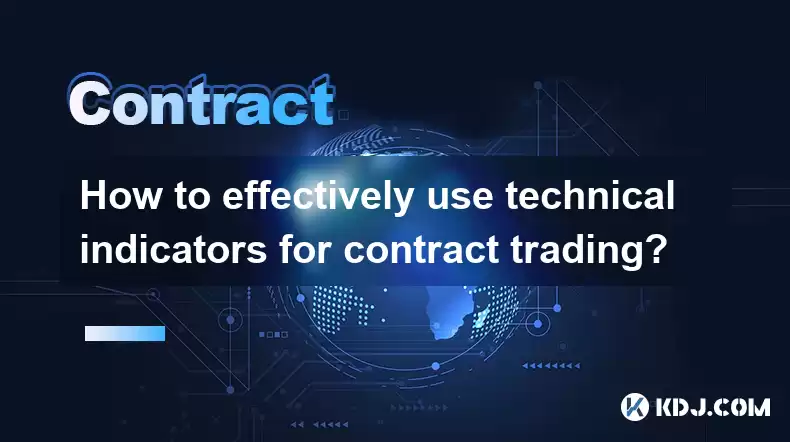
Key Points:
- Understanding the Fundamentals of Technical Indicators
- Identifying and Selecting the Right Indicators
- Incorporating Indicators into Trading Strategies
- Managing Risk with Technical Indicators
- Developing a Comprehensive Trading Plan
How to Effectively Use Technical Indicators for Contract Trading
Technical indicators are essential tools for analyzing market trends and identifying potential trading opportunities in contract trading. By using these indicators effectively, traders can enhance their decision-making process and increase their chances of profitability. This comprehensive guide will delve into the nuances of using technical indicators for contract trading, empowering you with a detailed understanding and practical strategies.
Understanding the Fundamentals of Technical Indicators
Technical indicators are mathematical formulas that use historical price data to calculate and display patterns, trends, and momentum in the market. They allow traders to visualize price movements and identify potential turning points. Understanding the underlying concepts behind technical indicators is crucial for interpreting their signals effectively. Common types of indicators include:
- Trend Indicators (e.g., Moving Averages, Bollinger Bands): These indicators help determine the overall trend of the market and identify support and resistance levels.
- Momentum Indicators (e.g., Relative Strength Index, Stochastic Oscillator): Momentum indicators measure the speed and magnitude of price changes, providing insights into market sentiment.
- Volume Indicators (e.g., On-Balance Volume, Accumulation/Distribution): Volume indicators assess the relationship between price and volume, providing information about market activity and potential reversals.
- Volatility Indicators (e.g., Average True Range, Bollinger Volatility): Volatility indicators quantify the fluctuations in price, helping traders gauge market stability and risk levels.
Identifying and Selecting the Right Indicators
Choosing the appropriate technical indicators for your trading strategy is paramount. The selection process should consider:
- Trading Style and Timeframe: Different indicators are suited for different trading styles and timeframes. For example, moving averages are ideal for longer-term trend analysis, while oscillators are more useful for short-term trading.
- Market Conditions: The effectiveness of technical indicators may vary depending on market conditions. For instance, trend indicators perform best in trending markets, while momentum indicators are more suitable for ranging markets.
- Combining Indicators: Using multiple indicators together can provide a more comprehensive view of the market. However, it's important to avoid overloading your charts with too many indicators, as this can lead to confusion and incorrect signals.
Incorporating Indicators into Trading Strategies
Once you have selected the appropriate technical indicators, it's time to incorporate them into your trading strategies. This involves:
- Determining Entry and Exit Points: Technical indicators can help identify potential entry and exit points by providing buy and sell signals. Traders should combine indicators with other tools, such as chart patterns, to confirm their decisions.
- Managing Risk: Indicators can help traders manage risk by providing insights into market volatility and trend strength. Traders can use indicators to set stop-loss and take-profit orders appropriately.
- Backtesting and Refinement: It's crucial to backtest your trading strategies using historical data to assess their profitability and identify areas for improvement. Refinement based on backtesting results is essential for optimizing strategy performance.
Managing Risk with Technical Indicators
Technical indicators play a vital role in risk management by:
- Identifying Potential Reversals: Indicators can provide early warning signals of potential price reversals, allowing traders to adjust their positions accordingly.
- Measuring Volatility: Volatility indicators quantify market fluctuations, helping traders assess the level of risk associated with their trades.
- Setting Stop-Losses and Take-Profits: Indicators can guide traders in setting stop-loss and take-profit levels to minimize losses and maximize profits.
- Understanding Market Sentiment: Some indicators, such as sentiment indicators, can provide insights into market sentiment and help traders gauge the overall risk appetite or fear in the market.
Developing a Comprehensive Trading Plan
An effective trading plan is essential for successful contract trading. When incorporating technical indicators, consider the following steps:
- Define Trading Goals: Determine your trading goals, such as profit targets, risk tolerance, and investment horizon.
- Select Technical Indicators: Choose the indicators that align with your trading goals and style.
- Establish Trading Rules: Develop clear and specific rules for entry, exit, and risk management based on your indicators.
- Backtest and Refine: Thoroughly backtest your trading plan and make refinements based on the results to enhance its effectiveness.
- Monitor and Adjust: Continuously monitor market conditions and make adjustments to your trading plan as needed to account for changing market dynamics.
FAQs
1. What are the most reliable technical indicators?
There is no single most reliable technical indicator as the effectiveness of indicators varies depending on market conditions and trading style. However, some widely used and reliable indicators include:
- Moving Averages
- Bollinger Bands
- Relative Strength Index
- Stochastic Oscillator
- On-Balance Volume
2. Can I use technical indicators alone for trading?
While technical indicators are valuable tools, they should not be used in isolation. Combining technical analysis with other factors such as fundamental analysis, chart patterns, and market sentiment can provide a more comprehensive and accurate assessment of the market.
3. How many technical indicators should I use?
The number of technical indicators to use is a matter of personal preference and trading style. However, it's generally advisable to keep the number limited and focus on a few key indicators that provide complementary information.
4. How often should I adjust technical indicators?
The frequency of indicator adjustments depends on the timeframes you trade. For longer-term trades, monthly or quarterly adjustments may suffice, while short-term traders may need to adjust more frequently, such as daily or weekly.
5. Can technical indicators predict the future?
Technical indicators cannot accurately predict the future. They can only provide insights into historical price data and identify potential trading opportunities. Traders should use indicators in conjunction with other analysis methods and carefully consider market conditions before making trading decisions.
Disclaimer:info@kdj.com
The information provided is not trading advice. kdj.com does not assume any responsibility for any investments made based on the information provided in this article. Cryptocurrencies are highly volatile and it is highly recommended that you invest with caution after thorough research!
If you believe that the content used on this website infringes your copyright, please contact us immediately (info@kdj.com) and we will delete it promptly.
- Bitcoin, Solana, MAGACOIN FINANCE: Navigating the 2025 Crypto Landscape
- 2025-08-12 00:30:13
- Cardano, ADA Holders, and Layer Brett: A Meme Coin with Real Utility?
- 2025-08-12 00:50:12
- Bitcoin, Michael Saylor, and Savvy Investors: A New Era of Digital Assets
- 2025-08-12 00:30:13
- Crypto Presales in 2025: Spotting the Next Big Thing with Analyst Insights
- 2025-08-12 00:50:12
- Cloud Mining in 2025: Bitcoin, Litecoin, and the Quest for Passive Income
- 2025-08-12 00:55:32
- Token Security, Agentic AI, Cybersecurity Guide: Navigating the New Frontier
- 2025-08-11 23:00:12
Related knowledge
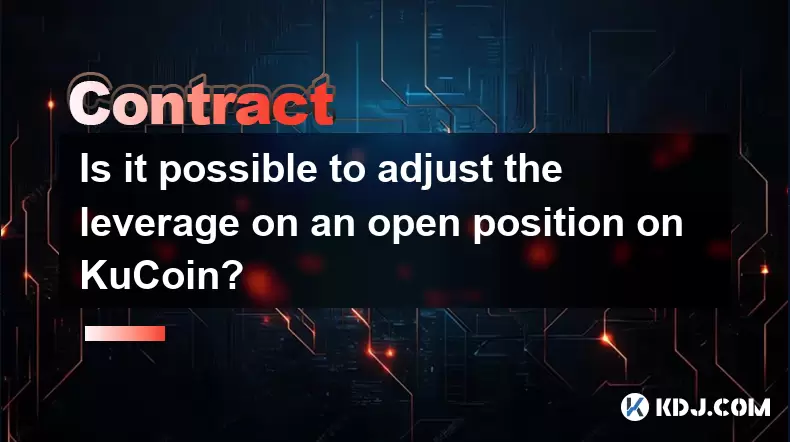
Is it possible to adjust the leverage on an open position on KuCoin?
Aug 09,2025 at 08:21pm
Understanding Leverage in KuCoin Futures TradingLeverage in KuCoin Futures allows traders to amplify their exposure to price movements by borrowing fu...

What cryptocurrencies are supported as collateral on KuCoin Futures?
Aug 11,2025 at 04:21am
Overview of KuCoin Futures and Collateral MechanismKuCoin Futures is a derivatives trading platform that allows users to trade perpetual and delivery ...

What is the difference between realized and unrealized PNL on KuCoin?
Aug 09,2025 at 01:49am
Understanding Realized and Unrealized PNL on KuCoinWhen trading on KuCoin, especially in futures and perpetual contracts, understanding the distinctio...

How does KuCoin Futures compare against Binance Futures in terms of features?
Aug 09,2025 at 03:22am
Trading Interface and User ExperienceThe trading interface is a critical component when comparing KuCoin Futures and Binance Futures, as it directly i...
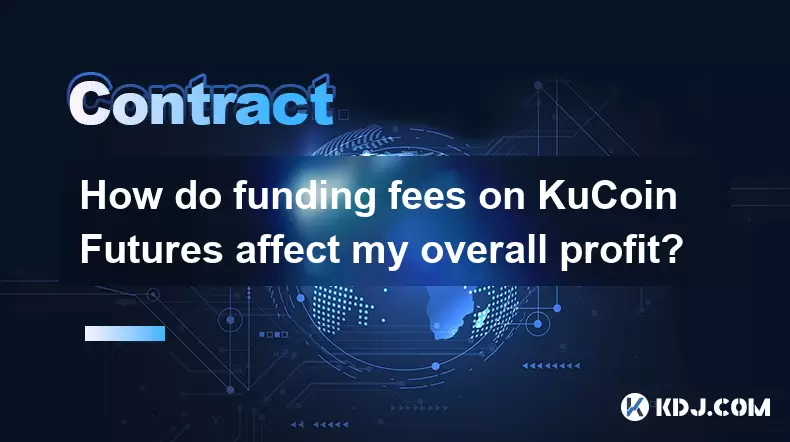
How do funding fees on KuCoin Futures affect my overall profit?
Aug 09,2025 at 08:22am
Understanding Funding Fees on KuCoin FuturesFunding fees on KuCoin Futures are periodic payments exchanged between long and short position holders to ...
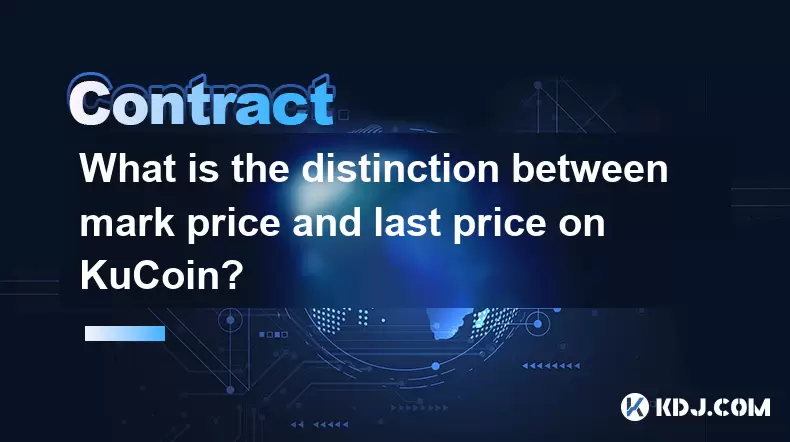
What is the distinction between mark price and last price on KuCoin?
Aug 08,2025 at 01:58pm
Understanding the Basics of Price in Cryptocurrency TradingIn cryptocurrency exchanges like KuCoin, two key price indicators frequently appear on trad...

Is it possible to adjust the leverage on an open position on KuCoin?
Aug 09,2025 at 08:21pm
Understanding Leverage in KuCoin Futures TradingLeverage in KuCoin Futures allows traders to amplify their exposure to price movements by borrowing fu...

What cryptocurrencies are supported as collateral on KuCoin Futures?
Aug 11,2025 at 04:21am
Overview of KuCoin Futures and Collateral MechanismKuCoin Futures is a derivatives trading platform that allows users to trade perpetual and delivery ...

What is the difference between realized and unrealized PNL on KuCoin?
Aug 09,2025 at 01:49am
Understanding Realized and Unrealized PNL on KuCoinWhen trading on KuCoin, especially in futures and perpetual contracts, understanding the distinctio...

How does KuCoin Futures compare against Binance Futures in terms of features?
Aug 09,2025 at 03:22am
Trading Interface and User ExperienceThe trading interface is a critical component when comparing KuCoin Futures and Binance Futures, as it directly i...

How do funding fees on KuCoin Futures affect my overall profit?
Aug 09,2025 at 08:22am
Understanding Funding Fees on KuCoin FuturesFunding fees on KuCoin Futures are periodic payments exchanged between long and short position holders to ...

What is the distinction between mark price and last price on KuCoin?
Aug 08,2025 at 01:58pm
Understanding the Basics of Price in Cryptocurrency TradingIn cryptocurrency exchanges like KuCoin, two key price indicators frequently appear on trad...
See all articles


























